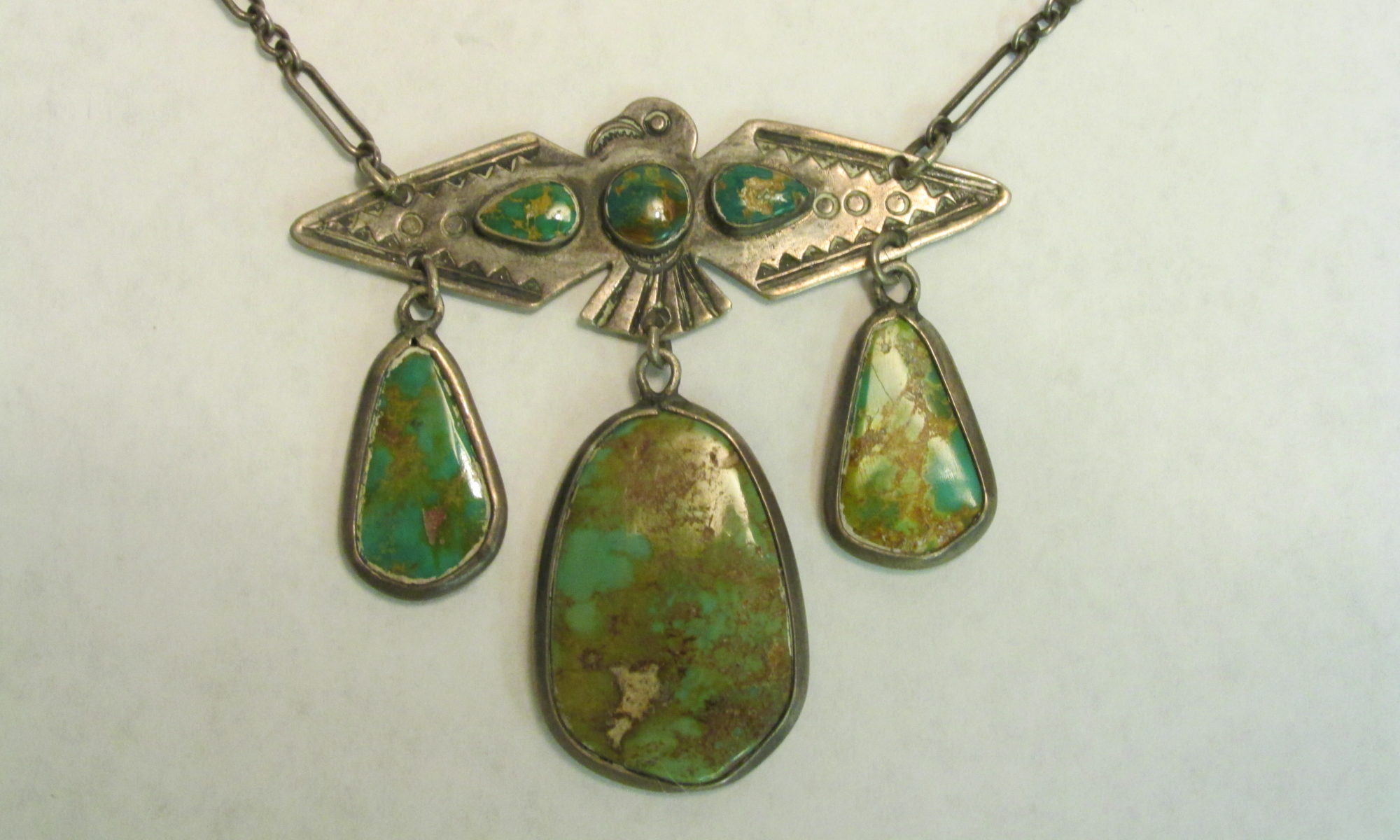The Navajo, or Diné, began working silver in the 19th century. Atsidi Sani, or “Old Smith,” (c. 1828-1918) who may have been the first Navajo blacksmith and is credited as the first Navajo silversmith, learned to work silver from a Mexican smith as early as 1853. Navajo metalsmiths make buckles, bridles, buttons, rings, canteens, hollow beads, earrings, crescent-shaped pendants (called “najas”), bracelets, crosses, powder chargers, tobacco canteens, and disks, known as “conchas” or conchos” – typically used to decorate belts – made from copper, steel, iron, and most commonly, silver.
Early Navajo smiths rocker-engraved, stamped, and filed designs into plain silver, melted from coins, flatware, and ingots obtained from European-American traders. Later, sheet silver and wire acquired from American settlers were also made into jewelry. The punches and stamps used by Mexican leather workers became the first tools used to create these decorations. Still later, railroad spurs, broken files, iron scraps and, later, piston rods became handmade stamps in the hands of these skilled artisans. As commercially-made stamps became available however, through contact with the larger American economy, they were also utilized. Several other traditional hand tools are employed, being relatively simple to construct.
The bellows consists of a skin bag about a foot long, held open with wooden hoops. It is provided with a valve and a nozzle. A forge, crucibles, an anvil, and tongs are used during the melting process. Molds, the matrix and die, cold chisels, scissors, pliers, files, awls, and emery paper also come into play. A soldering setup, consisting of a blowpipe and a torch made of oil-soaked rags used with borax, is manipulated by the smith. The silversmith uses a grinding stone, sandstone dust, and ashes for polishing the jewelry, and a salt called almogen is used for whitening. Navajo jewelers began sand casting silver around 1875; silver was melted and then poured into a mold, which would be carved from sandstone. When cooled and set, the piece normally required additional of filing and smoothing. Cast jewelry was also occasionally engraved. Sterling silver jewelry was soldered, and surrounded by scrolls, beads, and leaf patterns.
Turquoise is closely associated with Navajo jewelry, but it was not until 1880 that the first turquoise was known to be set in silver. Turquoise became much more readily available in ensuing decades. Coral and other semi-precious stones came into common use around 1900.
One of the most important forms of Navajo and Southwestern Native American jewelry, is the Squash Blossom Necklace. Most are made of a string of plain round silver beads, interspersed with more stylized “squash blossoms”, and feature a pendant, or “naja”, hung from the center of the strand. The squash blossom beads are copied from the buttons which held together the pants worn by the Spanish, and later, Mexican caballeros. These buttons represent – and are modeled after – pomegranates. Their identification as “squash blossoms”, which they closely resemble, is an understandable, and often repeated, error. The naja, which resembles an upside-down horse shoe, completes the design. Their origin can be found a continent, and several hundred years away, as a traditional part of Spanish horse halters.
In 1903, anthropologist Uriah Hollister wrote about the Navajo; he said, “Belts and necklaces of silver are their pride… They are so skillful and patient in hammering and shaping that a fairly good-shaped teaspoon is often made of a silver dollar without melting and casting.”
Tucson Indian Jewelry.com offers a HUGE selection of vintage Navajo Jewelry!
Information furnished by Wikipedia.org ©
